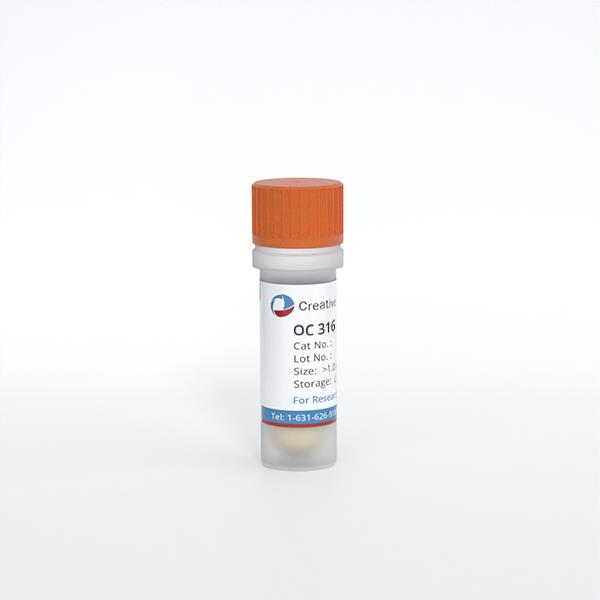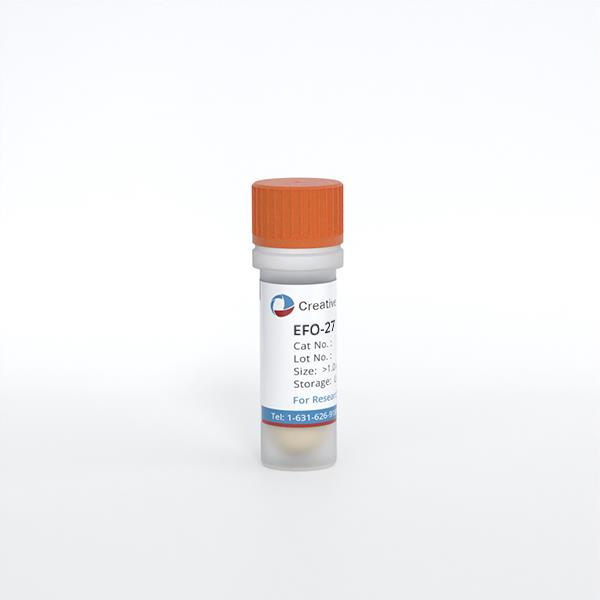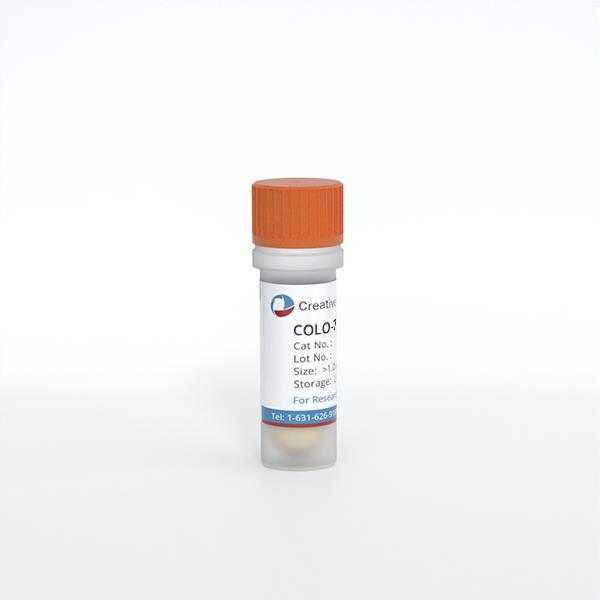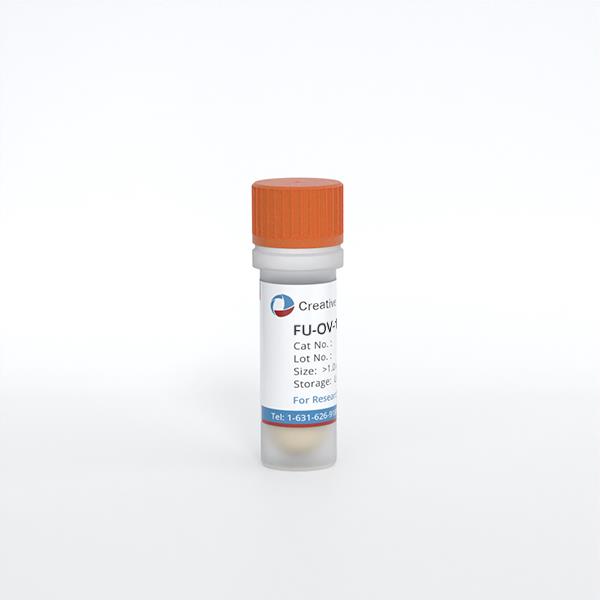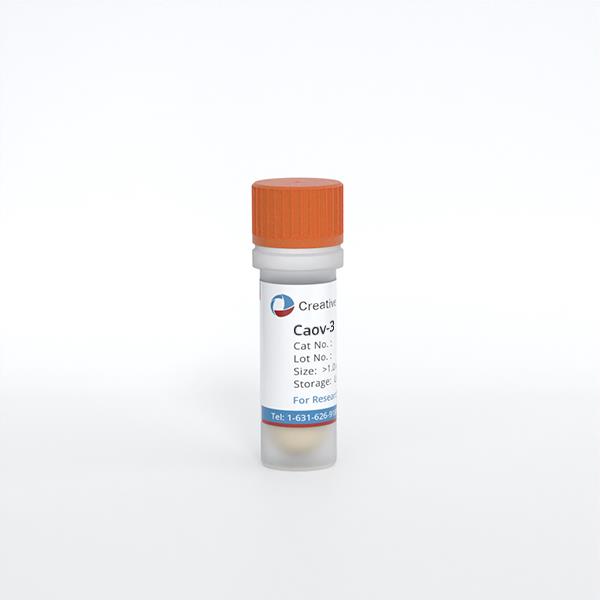Featured Products
Our Promise to You
Guaranteed product quality, expert customer support

ONLINE INQUIRY
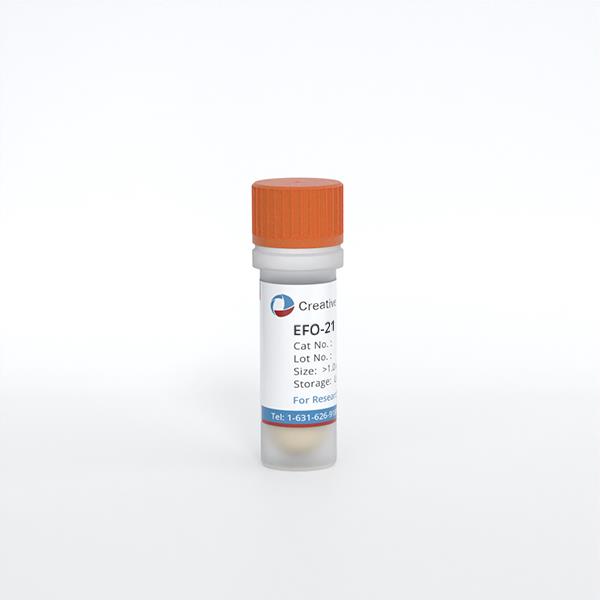
EFO-21
Cat.No.: CSC-C0341
Species: Human
Source: ovary cystadenocarcinoma
Morphology: epitheloid adherent cells growing in monolayers
Culture Properties: monolayer
- Specification
- Background
- Scientific Data
- Q & A
- Customer Review
Immunology: cytokeratin +, cytokeratin-7 -, cytokeratin-8 +, cytokeratin-17 -, cytokeratin-18 +, cytokeratin-19 +, desmin -, endothel -, EpCAM +, GFAP -, neurofilament -,
The EFO-21 cell line is a human ovarian cancer cell line isolated from the ascites of a 56 year-old white woman who was diagnosed in 1979 with undifferentiated serous cystadenocarcinoma of the ovary. EFO-21 cells have an epithelial appearance and stick to surfaces when grown in vitro. The EFO-21 cell line has been shown to release insulin-like growth factor binding proteins (IGFBPs) that regulate cell growth and differentiation. Furthermore, this cell line expresses nuclear v-myc, chromosomal v-raf oncogenes and surface env gp70 antigen.
The EFO-21 cell line has been widely used in science, especially in the field of ovarian cancer. For one, it is a model of ovarian cancer, which allows scientists to study ovarian cancer's pathogenesis, biology and signaling networks, thus improving our knowledge about how the cancer evolves and progresses. It can also be used to test the sensitivity and resistance of ovarian cancer cells to different anticancer medications, providing a drug-screening platform for clinical therapy of ovarian cancer and helping to identify potentially effective agents. Additionally, research using the EFO-21 cell line has identified tumor markers of ovarian cancer to help identify, track and predict ovarian cancer early, at its development, and at its prognosis.
 Fig. 1. Immuncytological staining of ER-α and -β in EFO-21 (Hermann RM, Wolff HA, et al., 2008).
Fig. 1. Immuncytological staining of ER-α and -β in EFO-21 (Hermann RM, Wolff HA, et al., 2008).
KPNA2 is Essential for EOC Cell Migration and Invasion
Epithelial ovarian carcinoma (EOC) is the most lethal gynaecological cancer, commonly found in advanced stages and with high levels of spread. KPNA2, a protein essential for the transport of the nucleocytoplasm, is overexpressed in many cancers, including EOC, and associated with poor prognosis. But it's unclear what role it plays in EOC. Huang's team studied KPNA2's role in EOC by measuring its impact on cell migration, invasion and EMT in vitro. They generated stably-transfected KPNA2 cDNA (EFO-21/KPNA2 and SK-OV3/KPNA2) and KPNA2 shRNAs (EFO-21/siKPNA2#1, EFO-21/siKPNA2#2, SK-OV3/siKPNA2#1, SK-OV3/siKPNA2#2). In wound-healing experiments, increased expression of KPNA2 led to dramatic migration and invasion of EOC cells, while decreased expression of KPNA2 led to diminished migration and invasion of EOC cells (Fig. 1). Furthermore, EOC cell invasion was greatly enhanced by the KPNA2 expression upregulation and hindered by KPNA2 expression downregulation in invasion assays (Fig. 2).
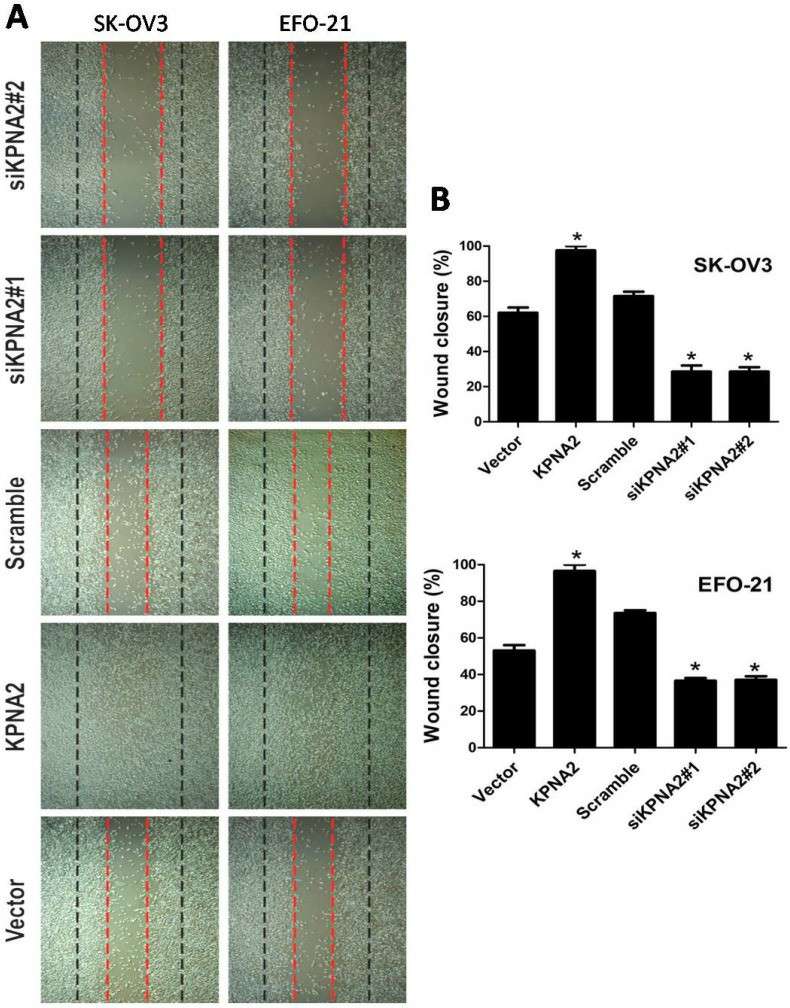 Fig. 1. Effects of KPNA2 on epithelial ovarian carcinoma (EOC) cell motility (Huang L, Zhou Y, et al., 2018).
Fig. 1. Effects of KPNA2 on epithelial ovarian carcinoma (EOC) cell motility (Huang L, Zhou Y, et al., 2018).
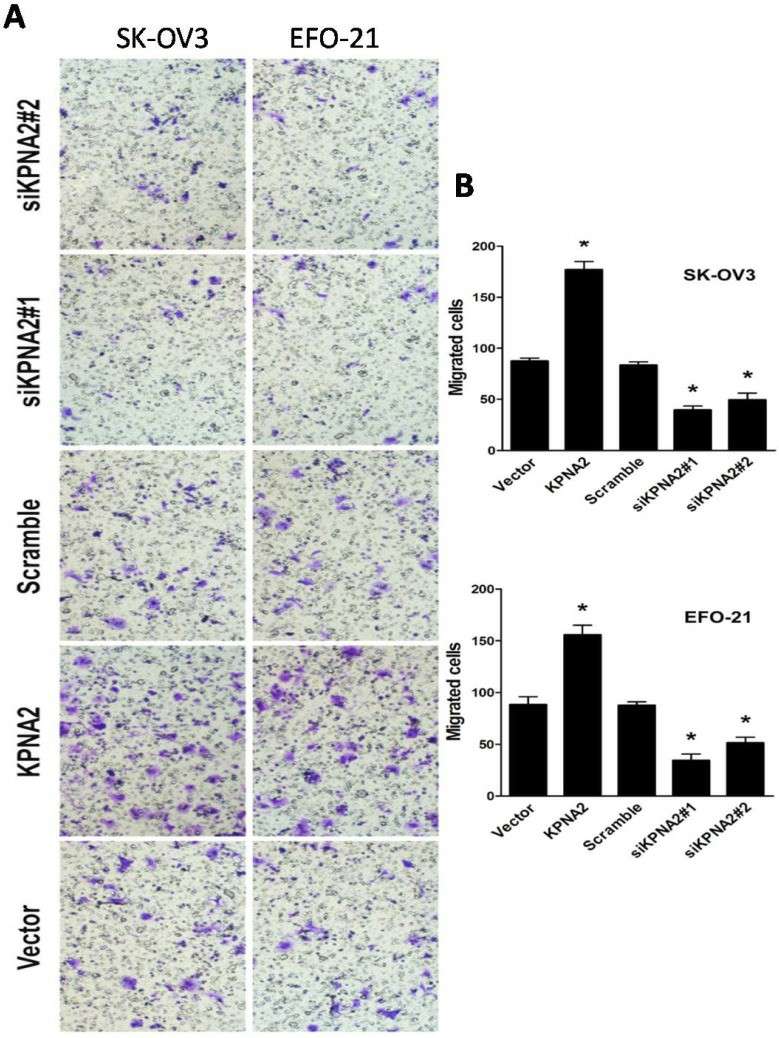 Fig. 2. Effect of KPNA2 on EOC cell invasion (Huang L, Zhou Y, et al., 2018).
Fig. 2. Effect of KPNA2 on EOC cell invasion (Huang L, Zhou Y, et al., 2018).
DEBIO 1143 Increases Carboplatin-Induced Apoptosis in the Carboplatin-Resistant Cell Lines A2780R and SKOV-3, but Necroptosis in EFO-21
Overexpression of the anti-apoptotic proteins cIAP1 and XIAP is usually the reason why ovarian cancer is resistant to carboplatin, a common chemotherapy drug. SMAC mimetic DEBIO 1143 may defeat this challenge by emulating apoptotic processes to kill cells. Thibault's team examined DEBIO 1143's apoptotic activity on its own or in combination with carboplatin. Carboplatin increased early apoptotic cells in carboplatin-sensitive IGROV-1 and A2780S cells, but not in carboplatin-resistant SKOV-3 cells (Fig. 3A). Only in SKOV-3 cells did DEBIO 1143 induce 30% more early apoptosis. While DEBIO 1143 combined with carboplatin did not further affect carboplatin-sensitive cells, it substantially increased early apoptosis in carboplatin-resistant A2780R and SKOV-3 cells compared to individual treatments. Notably, no apoptosis was observed in EFO-21 cells, though the DEBIO 1143 and carboplatin combination was highly cytotoxic, indicating potential induction of necrotic or necroptotic cell death. SKOV-3 cells also showed this pattern, but to a lesser degree. Carboplatin plus DEBIO 1143 resulted in significantly increased PARP cleavage in carboplatin-resistant A2780R and SKOV-3 cells, implying enhanced apoptosis (Fig. 3C). No PARP cleavage was observed in EFO-21 cells after any treatment, suggesting DEBIO 1143 promotes apoptotic-independent death, likely necroptosis, mediated by cIAP1, cIAP2 and RIPK-1 and RIPK-3. Pre-treatment with Z-Vad or Necrostatin-1 showed that DEBIO 1143, alone or with carboplatin, activates apoptosis and necroptosis in SKOV-3 but not in EFO-21 cells. Necrostatin-1 inhibited DEBIO 1143-induced necroptosis, reducing cell death effects (Fig. 4). These findings demonstrate DEBIO 1143, alone or with carboplatin, triggers cell death in resistant lines via apoptosis or necroptosis.
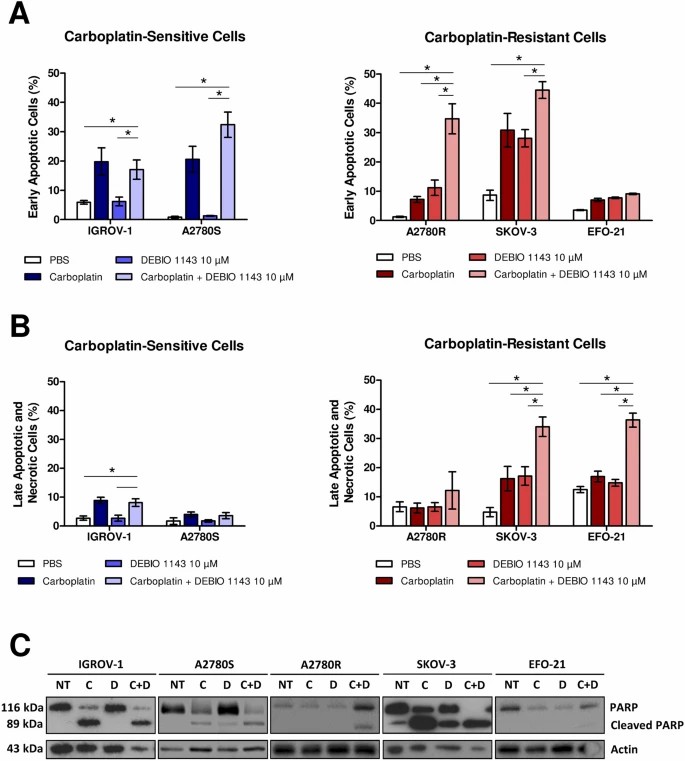 Fig. 3. In vitro induction of apoptosis in HOAC by DEBIO 1143 alone or in combination with carboplatin (Thibault B, Genre L, et al., 2018).
Fig. 3. In vitro induction of apoptosis in HOAC by DEBIO 1143 alone or in combination with carboplatin (Thibault B, Genre L, et al., 2018).
 Fig. 4. In vitro blockade of apoptosis or necroptosis in HOAC treated with DEBIO 1143, alone or in combination with carboplatin (Thibault B, Genre L, et al., 2018).
Fig. 4. In vitro blockade of apoptosis or necroptosis in HOAC treated with DEBIO 1143, alone or in combination with carboplatin (Thibault B, Genre L, et al., 2018).
Cell culture models may not fully represent the complexity of the tumor microenvironment, and animal models may not perfectly replicate human biology.
Ask a Question
Average Rating: 5.0 | 1 Scientist has reviewed this product
Detailed information
Our experimental program was greatly facilitated by the fact that the manufacturer provided detailed information or validation data.
24 Jan 2023
Ease of use
After sales services
Value for money
Write your own review
- You May Also Need

